The OPS-A® model power supplies by Oriel Instruments® have been designed to meet the specific requirements for proper operation of Oriel's DC Arc Lamps. These power supplies have the potential to operate in constant current, constant power and intensity modes while generating the high stability light output commonly needed for radiometric measurement, when employed with the appropriate Oriel lamp, socket adapter and lamp housing. All OPS Power Supplies are CE and RoHS compliant.
- High stability power supply for 50 - 1000 W DC arc lamps
- Large LCD display for effortless setup and monitoring
- Capable of operating lamps in power, current and intensity control modes
- Integrated temperature controller for TE cooled LIK-LMP light intensity controller kit
- RS232 and USB interfaces placed on rear panel for remote lamp operation and monitoring
- Shutter control, light intensity and timer features integrated
Features
User Interface with Large LCD Display
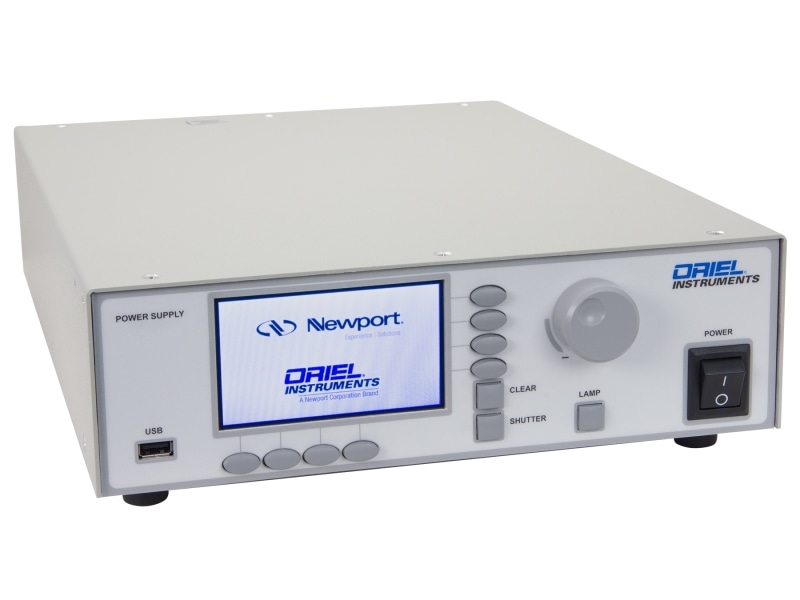
A power switch and all manually controllable features of the OPS model power supplies can be accessed from the front panel. Four horizontal push buttons are available and each activate a horizontal menu that allows for configuring of lamp operation mode, display mode, shutter, setup along with the help of an equivalent vertical menu that is also activated. These functions are easily displayed and navigated by the LCD display on the front panel of the power supply.
Constant Current, Power and Intensity Control Modes
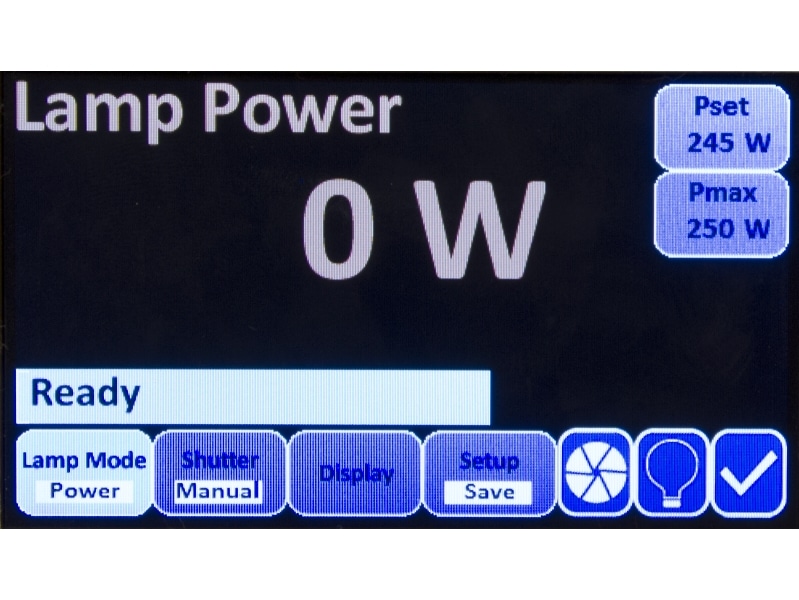
The OPS Series power supplies allow the lamp to be operated in current, power and intensity control modes. There is a very slight difference in the short term output stability when operating an arc lamp in constant power mode or constant current. However, the changes appear as the lamp ages. Even with a stable power supply, deposits within the lamp envelope are visible as the lamp electrodes degrade, changing the electrical characteristics of the lamp. The distance between the anode and cathode of the arc lamp increases, raising the lamp’s operating voltage. In Power Mode, the lamp works at a constant power setting. The current is lowered or raised in order to maintain the power at the same level as the voltage cannot be changed.
As the lamp ages, the radiant output decreases. However, the lamp life is extended. The light bulb icon on the OPS Power Supply's LCD screen illuminates after ignition, indicating that the lamp is on. During operation, real time power supplied to the lamp is also visible to the user. Before igniting the lamp, a user can maximize the operating power of the lamp and the operating power they desire to operate the lamp at. This avoids accidental damage to the lamp brought about by supplying excessive power. The lamp is operated at a constant current setting in Current Mode. As the voltage cannot be changed, the power is lowered or raised in order to maintain the current at the same level.
As the lamp ages, the power is increased. This results in higher optical output which to a certain extent may help compensate for a darkening lamp envelope. However, the lamp life is reduced because of the increase in power. Intensity Mode needs the use of the LIK-LMP light intensity controller kit (details below), also developed by Oriel Instruments. When operating in the lamp in Intensity Mode, the user can alter the Flux Set parameter until the preferred output intensity of the lamp is obtained. When the desired Flux Set has been established, the user can alter the Flux Calibration Factor (Flux Cal) setting to change the displayed Lamp Intensity on the LCD screen.
Altering the Flux Calibration Factor does not change power/current supplied to the lamp or its output intensity. Only the Lamp Intensity displayed on the LCD screen is altered. A photodetector calibrated to NIST or other widely recognized standard is frequently used for establishing a Flux Set. Then, the LIK-LMP is exchanged in place of the calibrated detector, and the Flux Calibration Factor is altered for the LIK-LMP to output the response of the calibrated detector during operation of the lamp. This saves the user both the inconvenience and cost of returning a photosensor to a metrology lab for re-calibration, that would otherwise be required had the calibrated sensor been employed during lamp operation.
Additional Light Stability with LIK-LMP Light Intensity Controller Kit (sold separately)
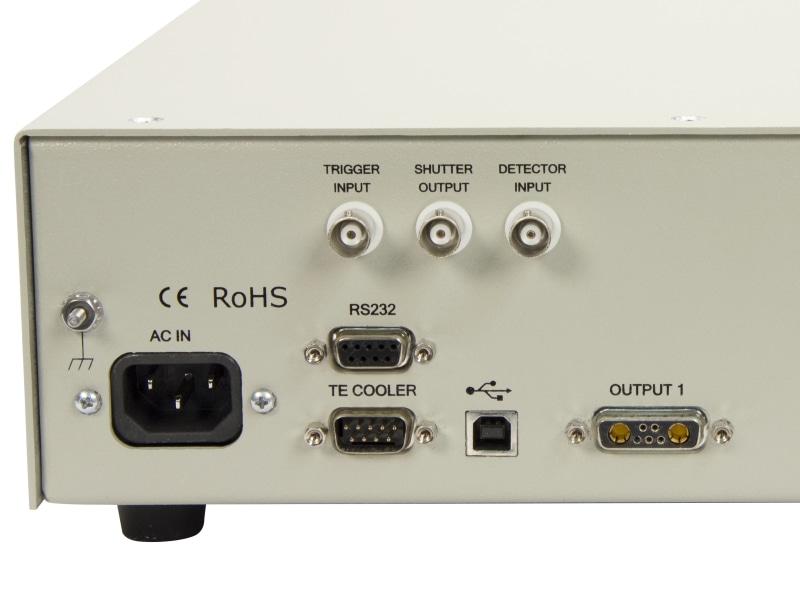
Even though Oriel's power supplies are greatly regulated, there are factors beyond the control of the power supply that may indeed affect light output. Some of these are ambient temperature fluctuations, lamp aging and electrode erosion. For applications where high stability light output is specifically vital, the LIK-LMP Light Intensity Controller Kit is recommended to compensate for such factors. It operates in conjunction with the OPS Series power supplies in order to maintain a long term, stable output.
The LIK-LMP makes use of a TE cooled silicon detector as its light sensing head. This detector monitors light output from the arc lamp source when used with the OPS-A Series Arc Lamp Power Supplies. Constant feedback of the light output allows the OPS Series Power Supply to determine how much current/voltage should be supplied to the light source in order to enable its output intensity to be constant as the light source ages.
The temperature of the Si detector is monitored and the current supplied to the TE cooler is also controlled by using the cables supplied with the LIK-LMP for interface with the OPS Series Power Supply. This enables stabilizing the temperature of the Si detector, developing consistent detector feedback independent of ambient temperature differences. The OPS-A Series Arc Lamp Power Supplies have the potential of controlling the temperature of the Si detector over a range of 0-25 °C.
Integrated Shutter Control and Timer Features
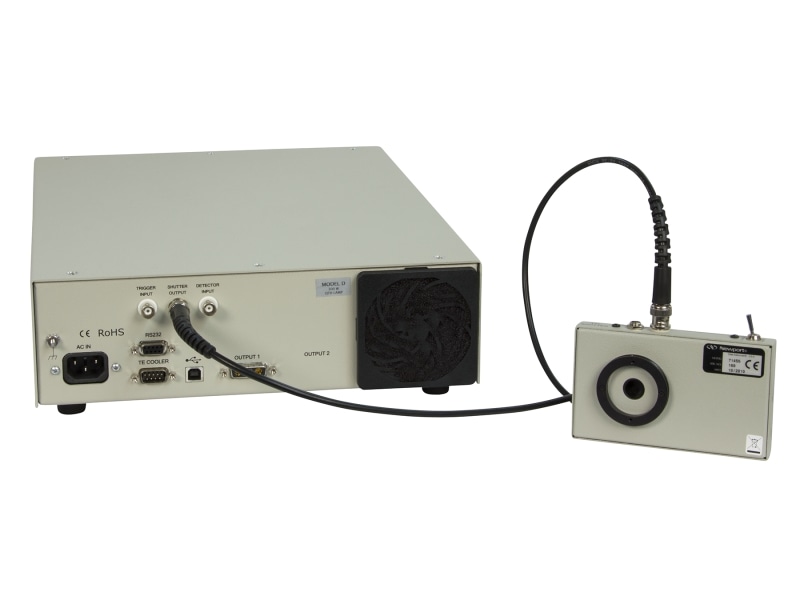
The shutter control feature of the OPS model power supply can be used in current, power and intensity control modes. It is possible for the OPS Power Supplies to control any shutter which responds by opening or closing when receiving a TTL signal. This includes Oriel’s model 71445 low-cost TTL shutter and the shutters designed into the Oriel Solar Simulators. A BNC connector is placed on the rear panel of the power supply in order to output these TTL signals to the electronic shutter. It is possible to manually open or close the shutter by pressing the SHUTTER button on the front panel of the power supply.
RS-232 or USB control of the shutter is also possible. Utilizing the OPS Power Supply's shutter control feature enables timed exposure control mode. The open or exposure time of the shutter and number of repeat cycles is set by the user. Exposure times can be paused and then resumed at will or reset to 0 in the middle of an exposure with the easy to use push buttons available on the front panel. The OPS power supply can be programmed for delivering a specified dose of light to a sample when Oriel's LIK-LMP Light Intensity Controller Kit is used with the shutter timer feature.
The dose is calculated as the total light flux multiplied by the time the shutter is open. The dose feature is extremely similar to the internal shutter timer feature but instead of highlighting a shutter open time, the user states the desired dose. The shutter is left open for however long it takes to reach this dose and it then closes. The user can set the close time and number of cycles for the sequence to repeat. Just as with the internal shutter timer feature, the user can continue, pause or abort an exposure whenever needed.
Configuration Settings

The OPS model power supplies store up to four setups. These Setups comprise of lamp operation mode with applicable parameter limits (current, power, flux, etc.) and timing preferences for dosage and shutter control. This allows a user to effortlessly recall earlier testing parameters in order to develop a repeatable setup.
Safety Interlock Prevents Accidental Exposure
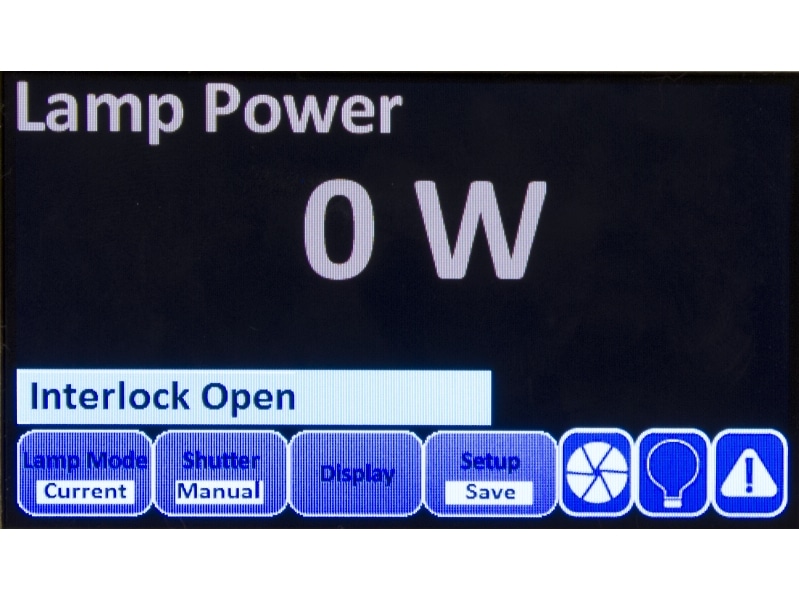
Newport’s Oriel Power Supplies are available with a safety interlock feature which must be satisfied prior to the power supply powering the lamp and which will disable the power supply if broken during operation. Accidental opening of the door or overheating of the housing will automatically shut down the power supply.
Power Supply Replacement Guide
Unlike the earlier generation of Legacy Power Supplies which was restricted in compatibility by lamp power rating and lamp type (Xe, Hg, HgXe), the OPS-A Power Supplies have the potential of operating all Oriel DC Arc Lamps, and only lamp power will have to be considered.
Operates Lamps with High Light Stability
When selecting components for assembling a complete illumination system, the OPS-A Series Power Supply is considered to be an important component for operating a DC arc lamp along with minimum light ripple. The OPS-A150 operates Oriel's DC Arc Lamps with <0.1% rms light ripple. The OPS-A500 and OPS-A1000 models operate Oriel's DC Arc Lamps with <1% rms light ripple. Oriel Instruments provide all the essential components needed for assembling such a high stability DC arc lamp system.
OPS Power Supply Demonstration Video
OPS Series Power Supply Demo